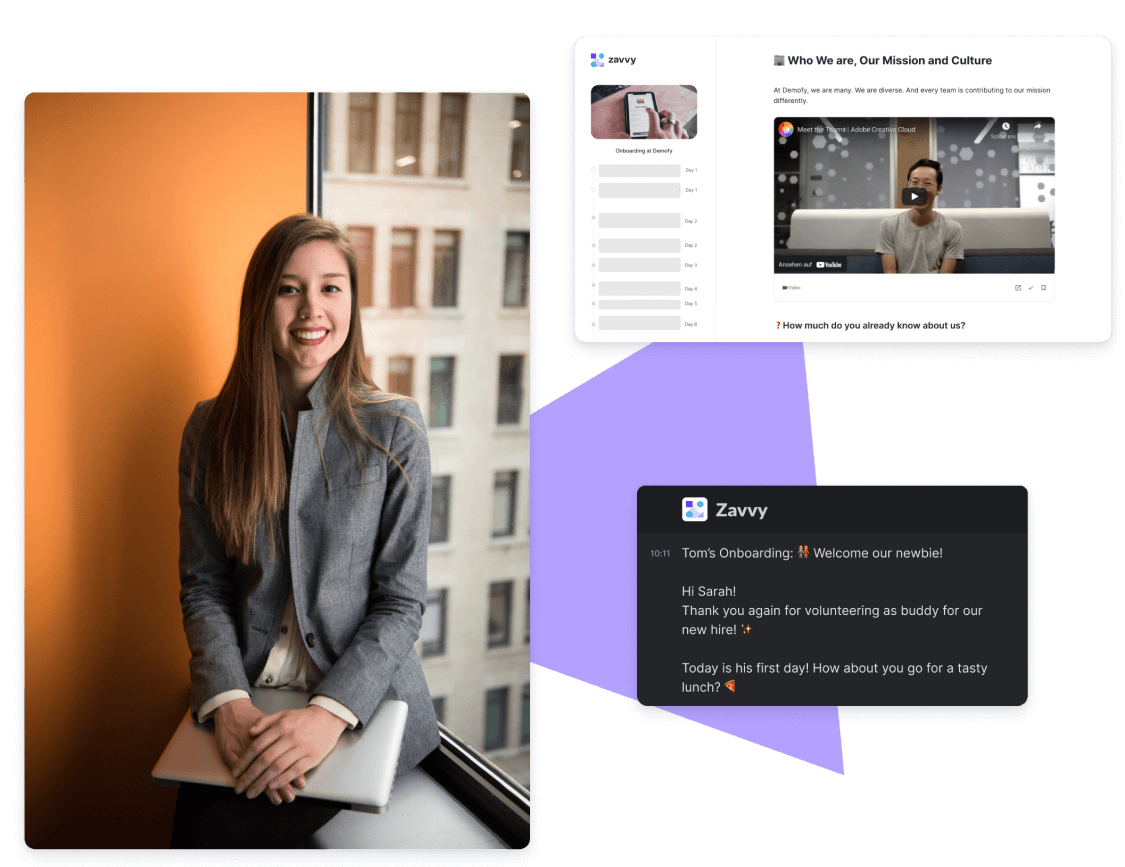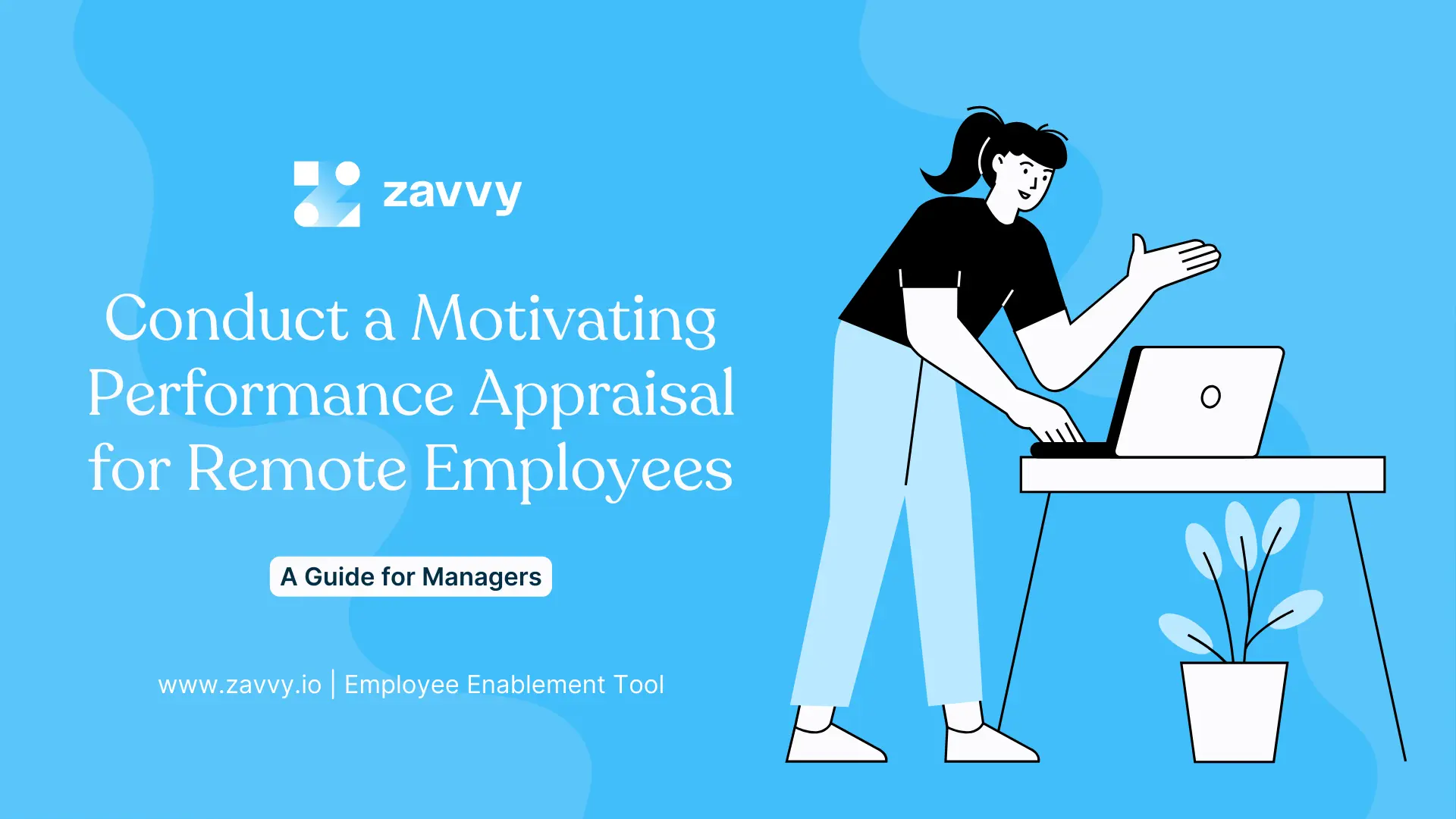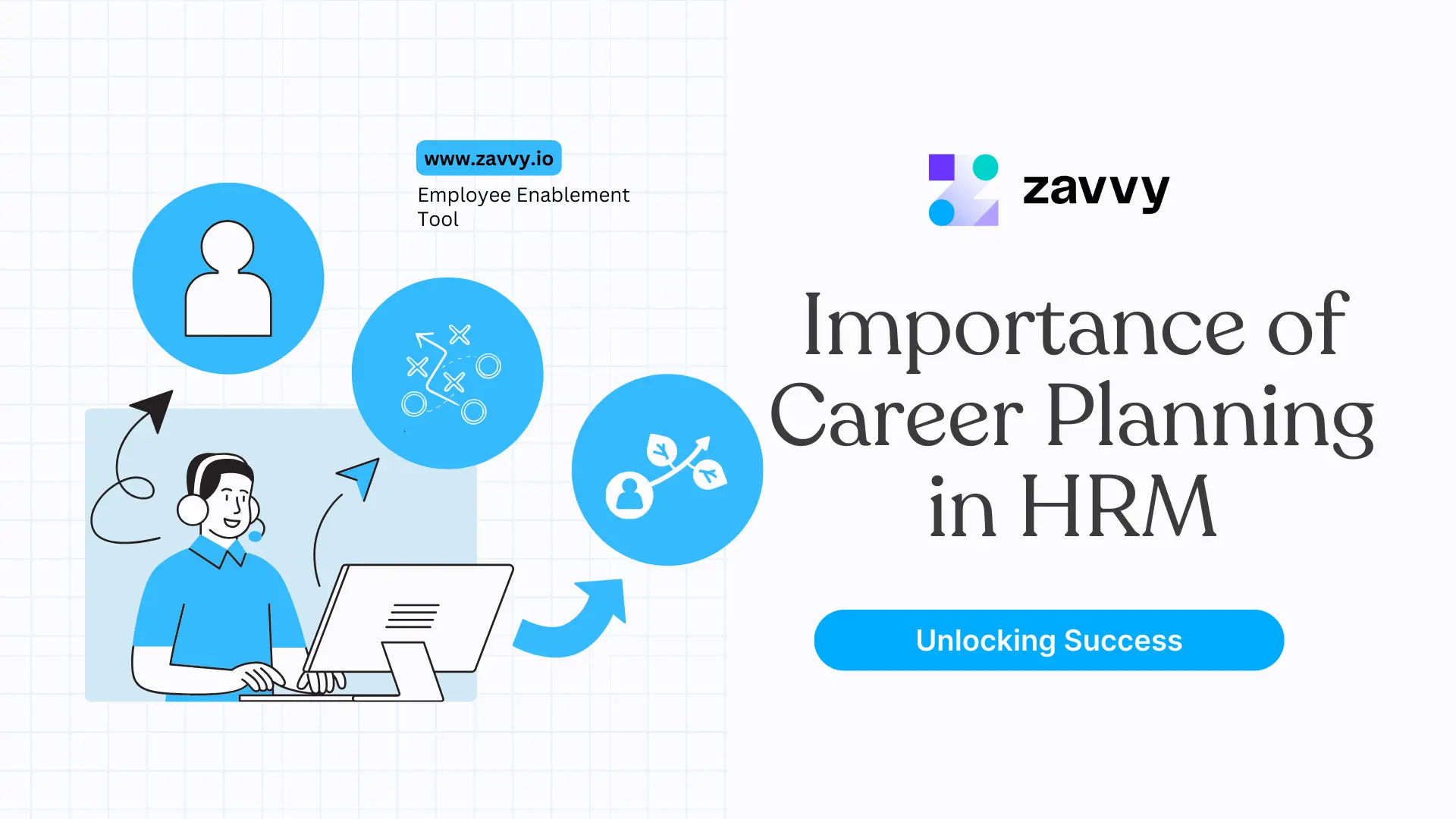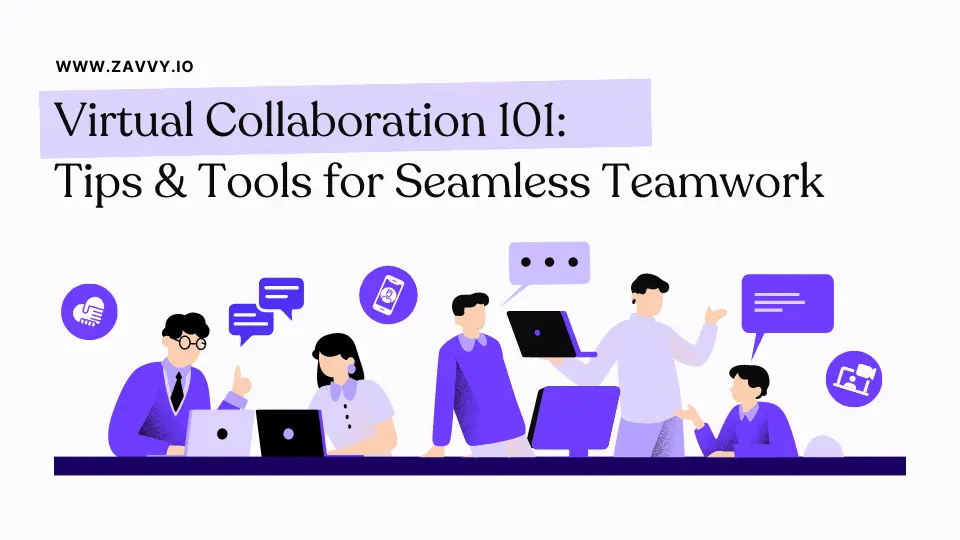
360 Feedback Questions for Leadership: 44 Sample Questions to Evaluate Your Managers & Discover Emerging Leaders
Zuletzt aktualisiert:
24.1.2024
Lesezeit:
9 minutes
última actualización
24.1.2024
tiempo de lectura
9 minutes
Last updated:
January 24, 2024
Time to read:
9 minutes

Want to reap the benefits of feedback beyond performance reviews? 360 feedback is a powerful tool to help you identify leadership potential in your organization.
But how do you pinpoint tomorrow's leaders among your employees?
360 degree employee feedback lifts the pressure from you. It builds upon the observations from those who know your future leaders better than anyone – their colleagues.
Use 360 feedback questions for leadership to get a holistic view of your workers' leadership strengths, development opportunities, and needs.
With a 360 degree approach to feedback, managers, direct reports, team leaders, and executives assess one another to paint a more fair and holistic picture of a person's competencies. Thus, you ensure that employees across seniority levels and hierarchies share their insights.
You'll learn two key things in this article:
- How to assess potential future leaders through 360 degree feedback.
- How to use 360 degree feedback to evaluate managers and how to implement the input to help them grow.

❓ What is a 360 degree leadership assessment?
You can use 360-degree employee feedback for leadership assessment as a means to find potential leaders in your workforce.
In general, the 360 degree philosophy consists of performance assessment by collecting answers bottom-up, top-down, plus peer and self-evaluations.
You invite both upper management and employees to fill in feedback questionnaires. Potentially, clients can also participate.
The feedback can target overall qualities and competencies, like communication or accountability.
For leadership assessment, in particular, you would tailor the questions to spot potential leaders.
When introducing 360 feedback, focus on the benefits:

- More well-rounded pictures from many feedback sources.
- Increase in accountability and work ethics.
- Improved communication and motivation.
A 360 degree leadership assessment can be part of a leadership competency model. It helps assess leadership potential, identify training needs, and implement relevant leadership development programs.

➡️ To use this template for leaders, make sure that your core leadership competencies go into the "Focus Areas" (First column).
Some areas that you can cover in your 360 leadership assessment template:
- If the person inspires others and motivates them to do a better job.
- If they are visionaries and think outside of the box.
- Their drive and hunger for results.
- Their capacity for team-building and making everyone feel part of the group.
As a rule of thumb, 360 feedback questions for leadership should:

- Evaluate soft and interpersonal skills rather than individual performance KPIs.
- Encompass 8-10 topics relevant for the person and role and not more than 30-40 questions in total – survey overwhelm is real!
- Focus on performance and behavior – not personality traits.
- Reveal how the person's performance will directly contribute to the company's success.
Tip #1: Ensure that you collect insights from multiple sources. Gaining a more holistic picture will avoid a biased view.
Tip #2: Ensure anonymity. Otherwise, people may shy away from giving honest feedback.

💼 22 360 Degree feedback questions for managers
You can use these 360 degree questions for managers at all levels – from team leaders to upper management.
Below are some examples of 360 feedback questions for managers. We start with some yes/no questions.
Note: You can switch yes/no questions into statements with a sliding scale.
For example: "The manager is a good representative of company values" followed by options ranging from "Completely Agree" to "Don't agree at all."
- Is the manager a good representative of the company values?
- Do they lead by example and inspire others by their actions?
- Does the manager give a clear vision for the work that aligns with the company values?
- Can the manager work well under pressure?
- Do they solve conflicts efficiently and without being biased?
- Can the manager meet deadlines?
- Is the manager respectful to others?
- Does the manager take other team members' opinions into account before making a decision?
- Does the manager solve problems effectively?
- Is the manager good at communicating and quickly responding to their team members?
- Is the manager a good listener?
- Does the manager seek clarification and further explanations to avoid misunderstandings?
- Do they deliver helpful and constructive feedback?
- Do they continuously reward excellent employee performance and celebrate wins?
These can be added to the 360 degree feedback questionnaire for executives to get a complete picture of the employee's profile.
The view on open-ended questions in a 360 review differs. They can add nuance and motivate choices but require more effort to craft during data processing.
The benefit of using closed-ended questions is that it's easy to score your candidates against each other and see who got the most positive responses. It also saves time from processing and extracting value from their open-ended counterparts.
Plus, it's hard to avoid subjectivity when interpreting open-ended questions. It's ultimately up to you and the resources you have.
Some open-ended questions for managers:
- Can you give an example of a specific situation the manager handled well?
- Can you give an example of an area where they could improve?
- What would you suggest for the manager to improve [essential skill]?
- What suggestions do you have for the manager to evolve as a leader?
- What sets this manager apart from others within the organization?
- What is their greatest strength?
- How well do they adapt to changing priorities and business goals?
- Do you have any additional feedback in this area?
Self-Feedback for managers
To get an accurate 360 picture, managers themselves have to do a self-evaluation.
The self-evaluation can show where their self-image differs from how others perceive them – and thus map growth opportunities.
Examples of questions for self-evaluation:

- What do you think your team members appreciate most about you?
- Where would you like to delegate less/more to your team members?
- How could we better balance attention and efforts between short-term tasks and long-term assignments?
💪 20 Questions to ask in a 360 review to uncover emerging leaders
Sometimes we don't see the forest for the trees.
Instead of automatically scouting for new stars outside your company, consider promoting promising candidates among your employees to save time and money.
When you carry out your periodic performance reviews, assess your employees' leadership skills. You might find some untapped talent, which you can grow with a strategic development plan.
Tip #1: Create a career progression framework to show these employees how they can grow within your organization. They will see what competencies they need to acquire or enhance.
A 360 format offers the perfect opportunity to discover emerging leaders: everyone working close to the person can voice an opinion.
The first step in selecting questions for a 360 degree feedback survey to uncover emerging leaders is to decide which leadership qualities are essential to you.
For example: Suppose you're facing a challenge with managers and leaders not responding quickly. In that case, one question should be about how fast the person replies to messages.
Remember: As part of a 360 framework, self-review and self-reflection are essential.
Tip #2: Use the below questions to take the pulse on your people's leadership potential.
Note: These questions can be reframed into statements where the respondent can rate to what extent they agree.
- Does this employee take their tasks seriously?
- Do you trust this employee to make ethical and honest decisions?
- Does this employee show a high work ethic?
- Does this employee show empathy with the customers?
- Has this employee taken the initiative to start new projects or improve existing ones?
- Does this person go the extra mile to satisfy customers?
- Do they contribute to a healthy work environment?
- Do they take the opportunity to share helpful feedback?
- Do you rely on this employee when you face specific problems?
- Does this employee show a passion and genuine interest in their work tasks?
- Do they act professionally?
If you want to add some open-ended alternatives to assess new leaders, here are our sample questions:
- How do you think the employee could best improve their communication skills?
- Do you feel this employee understands how their actions impact others? If so, how?
- What is one thing that this person could do differently that would strengthen your trust in them?
- Do you perceive them as learning from their mistakes? If so, please give an example.
- How does the employee manage their emotions?
- How do they deal with stress?
- How do you perceive their willingness and capabilities in giving presentations/demonstrations?
- How well does this employee communicate verbally and in writing?
- What are the top three competencies you have observed in this person?
To get a realistic picture, it's vital that people feel comfortable with being open and honest. Even behind anonymity, some people may be hesitant not to hurt others.
Imagine having engaged employees that look forward to giving and receiving feedback instead of dreading it like the dentist! It is thus essential to creating an atmosphere where feedback is a natural and regular part of the work culture.
➡️ But how do you create a feedback culture at your workplace? Check out our Ultimate guide to creating a feedback culture. We included practical tips and some real-life examples to inspire you.
🔑 The key: Implementing 360 degree feedback

The reviews by each employee are just the first step – see them as getting the key. For transformation to happen, you need to use the key to open the door.
When inappropriately done, feedback is useless at best. At worst, it can cause negative emotions like resentment and lack of trust.
On the other hand, positive feedback has been linked to positive business outcomes.
Remember: Not all employees respond to feedback in the same way. Some employees desire different approaches.

Tip #1: A creative solution is to use assessment tools like Human Design, enneagrams, DiSC, and Myers-Briggs. These tools can support managers with the implementation in a way that resonates with each individual. They can also guide managers in finding and enhancing their leadership styles.
Tip #2: Don't fall into the trap of using 360 feedback only once a year for the annual performance reviews.
Tip #3: Use 360 feedback as a foundational component of your employee growth strategy.
360 feedback will serve as a helpful foundation during performance reviews with managers: It offers an opportunity to reflect on employee evolution and identify areas for further improvement.
Tip #4: Feedback should always be actionable. As such, it can be helpful to elaborate on the results and tie them to measurable goals.
For example: "improving communication skills" is a vague, undefined task, while "replying to emails within twenty-four hours" is something tangible.
➡️ Train your new leaders with microlessons
Once you have used the 360 degree feedback templates to identify your new managers and leaders, you want to give them appropriate training. But it can be challenging to fit in training with their existing work tasks.
The famous study claiming that humans have a shorter attention span than goldfish is questionable – attention spans online seem to be around 8 minutes rather than 8 seconds.
That said, information overwhelm is real. And that's why microlearning has gained popularity!
Microlearning delivers concise classes on a specific topic. With Zavvy, you can train your new leaders through our micro-coaching program. The teachers are thought-leaders from successful companies like Google, N26, and Deezer.
But won't the slim format impair learning? Research shows the opposite is true. According to the e-learning company EdApp, the average knowledge retention is 70 to 90% with microlearning compared to 15% with traditional learning.
🏢 Discover how Freeletics is building the next generation of leaders with Zavvy using microlessons, leadership onboarding and manager roundtables.
➡️ Establish a feedback system that boosts leadership development and performance with Zavvy
Regular feedback is desired by most people in your team – at least statistically speaking.
A whopping 65% of employees want more feedback. According to the same source, 98% of employees disengage from work if they get little or no feedback.
But giving feedback is not always so straightforward. Often, your employees might perceive it as unfair. This is why you must provide objective, constructive, helpful, and high-quality feedback.
But that is easier said than done.
Moving from linear performance reviews led by the manager to 360 feedback reviews gives a more holistic picture of a person's performance and strengths. So, when rightly implemented, 360 feedback can lead to happier team members that feel recognized.
And you don't need to reinvent the wheel! Use our 360 feedback template to get started, and feel free to elaborate with questions relevant to your company.
And if you're ready to take your feedback processes to the next level, Zavvy is here to help you.
Our 360 feedback solution helps you establish a feedback culture that boosts performance and growth! Set up your highly customized 360 feedback process in just a few clicks.
Use our templates to create your 360 feedback questionnaire. Automatically assign and engage people based on the criteria you set.
- Look at the results and have a clear performance and development map.
📅 Get a free demo of our 360° feedback software today
.webp)
Read next
Als Nächstes lesen
No items found.
No items found.
.png)





















.png)
























